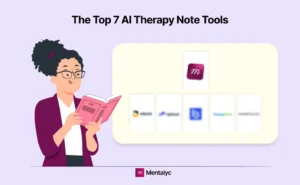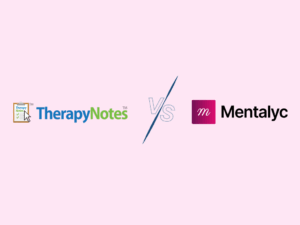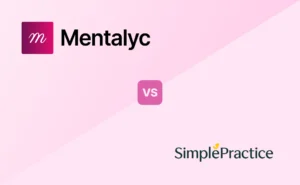CPT 90785 is an add-on code, which means it must be billed in addition to another primary service—individual or family therapy. This code applies to therapy sessions involving “interactive complexity.” In simpler terms, interactive complexity describes communication challenges or other factors that make a therapy session more difficult than usual.
Have you ever had a session where everything that could go wrong did? Picture this: You are trying to have a significant conversation with a teen who almost exclusively replies with “yes” and “no.” Meanwhile, on the same couch, their parents are arguing about the value of therapy. Your next client comes in and you bring in an interpreter to guarantee nuanced conversations are correctly translated, only to see a puzzled look on your client’s face, suggesting the session isn’t progressing as planned.
In these moments, therapists must quickly change their mindset and approach to the session, testing their skills, patience, and creativity. In these moments, you can confidently turn to CPT code 90785 or Interactive Complexity.
This article will explore practical peer-to-peer recommendations to help you implement CPT code 90785 effectively in your practice. Keep reading if you’re unfamiliar with this code or looking to enhance your practice further.

New! Transfer your notes to EHR with a single click. No more copy-pasting.
In this guide, we’ll cover:
- When to use CPT Code 90785
- How to document it correctly
- What reimbursement can you expect
- How to avoid common mistakes that could result in denied claims
- Whether it needs a modifier
- Whether it can be billed with medication or E/M codes like 99214
When Can You Use 90785?
CPT code 90785 is intended explicitly for sessions that involve interactive complexities. Its usage is determined by the nature of the interactions rather than the length of the session. To ensure you’re using code 90785 appropriately, make sure your session includes at least one of the four qualifying criterion for interactive complexity. This could include involving multiple participants in the session, addressing communication barriers, managing emotional or behavioral reactions, or dealing with mandated reporting or legal issues.
You can bill 90785 alongside codes such as:
- 90791 – Initial diagnostic evaluation
- 90832, 90834, 90837 – Psychotherapy (30, 45, 60 min)
- 90846, 90847 – Family psychotherapy (conducted with or without the client)
- 90853 – Group therapy (rare but technically possible)
It is important to note that CPT code 90785 cannot be billed with every other CPT code. For example, Evaluation and Management (E/M) codes such as 99214 focus on evaluating and managing medication rather than providing psychotherapy, so 90785 would not be applicable in these situations.
Qualifying Criteria for Interactive Complexity
The American Medical Association outlines four leading indicators that justify using 90785. You only need one to apply the code, but it has to be clearly present and documented.
Examples of Interactive Complexity:
Involving Others in the Session
Sometimes, therapy involves more than just the client. When family members, guardians, teachers, or even caseworkers are involved, they can significantly impact the direction of the session.
Examples:
- You’re working with a child in foster care, and during the session, a CPS caseworker needs to participate to clarify custody updates or safety concerns.
- You involve a non-parental guardian to help the child feel safe enough to engage in therapy following a traumatic event.
Communication Barriers
This includes nonverbal, disruptive, or unusual communication patterns that make therapy more complex. This is common in sessions with:
- Children or teens who use play or nonverbal cues
- Clients with autism spectrum disorder
- Clients with selective mutism
- Clients with psychosis or disorganized thinking
Sometimes, clients struggle to communicate effectively, slowing the session down.
For example:
- A teen refuses to speak and only communicates via drawing or texting, requiring a complete shift in your approach.
- A client with schizophrenia has disorganized speech and delusions that disrupt the flow of the session.
If you have to spend extra time interpreting what the client is trying to communicate, that’s a red flag for interactive complexity.
When You Need to Manage Emotional or Behavioral Reactions
Sometimes, therapy involves addressing emotional or behavioral reactions that can derail the session.
Consider:
- A young client has a meltdown mid-session, leading to self-harming behaviors that require immediate attention.
- A family therapy session escalates into yelling and accusations, and you must manage emotions before continuing the session.
Mandated Reporting or Legal Involvement
Sessions that involve reporting abuse, addressing custody issues, or preparing legal documentation also qualify due to the inherent complexity and high stakes involved.
Think about:
- A child discloses abuse, and you begin the mandated reporting process during the session.
- The session includes a discussion of a court custody evaluation, with multiple parties trying to influence the outcome.
How to Document CPT Code 90785
Proper documentation is absolutely necessary, not just for getting appropriately paid but also for preserving clinical integrity. When documenting your challenging sessions, jot down the specific difficulties you faced, including:
- The involvement of third parties (e.g., CPS, a guardian)
- Any changes in your therapeutic approach (e.g., nonverbal communication techniques)
- Emotional or behavioral reactions that required de-escalation
A simple template you can adapt for CPT Code 90785:
- Interactive complexity was present due to [insert applicable reason: e.g., involvement of third party, significant behavioral dysregulation, maladaptive communication]. This required [specific clinical intervention or adjustment] to maintain therapeutic effectiveness.
Here’s an example of how interactive complexity might be documented:
- “Interactive complexity was present due to the child’s persistent nonverbal communication and refusal to engage verbally. The therapist used play therapy and non-directive drawing prompts to facilitate expression.”
The goal is to clarify why this wasn’t a typical session and what steps you took in response.
How to Know if You’re Underusing 90785
Some Questions to Consider:
- Did you need to change your approach because of communication issues or behavioral problems?
- Were third parties involved in a way that impacted the therapy session?
- Did the client display disruptive, dysregulated, or unusual communication requiring intervention?
If you’re nodding “yes” to any of these, 90785 might apply—you should ensure you didn’t miss out on fair compensation.
A Note on Billing and Reimbursement
Most major insurers recognize 90785, but policies can vary. Some Medicaid programs and private insurers may cap how often it is reimbursed. Remember, you don’t need to bill it whenever the client exhibits challenging behavior. Use your clinical judgment—this code concerns specific complexities above the baseline.
Reimbursement rates for 90785 can differ depending on your payer and location, but generally, therapists report earning between $10 and $25 per use. While it may not seem like a lot on its own, it can add up over time, especially when consistently handling more complex cases.
No modifier is typically required for CPT 90785 when billed with the appropriate primary psychotherapy code but always check with your payer to be sure.
Pro Tip: Check your payer’s policy or your clearinghouse portal to see if 90785 is allowed on claims with your primary therapy codes. If in doubt, submit it with documentation—the worst they can say is no, and the best-case scenario is you get paid what you’re owed.
What 90785 is Not For
To avoid claim denials or misuse, it’s helpful to know what doesn’t qualify:
- Sessions where the client is quiet or resistant, but you’re still able to proceed normally
- Routine family involvement (e.g., parents sitting in on child sessions)
- Everyday emotional distress or complex topics
- Extended time (that’s a different code—look at time-based add-ons like 99354)
Navigating the Ethics of Coding 90785
Interactive complexity often intersects with sensitive topics, and ethical documentation matters as much as accuracy. Here’s how to strike the right balance:
- Code what occurred, not what pays more. Let the session guide your billing—not assumptions about reimbursement.
- Be factual without over-sharing. For example: “Child safety concerns were discussed, requiring careful navigation of mandated reporting” is better than detailing the abuse disclosed.
- Write with the client in mind. Ask yourself: “How would this sound if the client or guardian read it?”
- Consult when in doubt. Ethical questions are best addressed in supervision or peer consultation.
Approaching 90785 with clinical and ethical clarity helps you bill confidently and compassionately.
Your Interactive Complexity Action Plan
If you’ve made it this far, you’re serious about mastering CPT code 90785! Here’s how to put that knowledge to work:
- Review the four qualifying criteria and identify which ones you encounter most.
- Create documentation templates that align with each scenario.
- Audit recent notes for missed opportunities to use 90785
- Check your top three payers’ policies on reimbursing this code
- Train any staff involved in documentation or billing
- Implement a quarterly self-audit to ensure compliance.
Proper use of CPT code 90785 isn’t just about billing—it’s about telling the whole story of your clinical expertise, especially when working with your most complex clients.
Conclusion
Interactive complexity coding may seem, well… complex—but it doesn’t have to be. With the right understanding, clear documentation strategies, and a commitment to ethical accuracy, you can confidently capture the full scope of the care you provide.
At Mentalyc, we support clinicians in delivering high-quality care and building sustainable, efficient practices. If you’re looking to streamline your documentation and ensure you are always putting your best foot forward, sign up for a free trial to see how Mentalyc can help.
FAQs on CPT Code 90785
Q: Can I use 90785 for every family therapy session?
A: Nope! Simply having family members present doesn’t automatically qualify. Evidence must be documented that their involvement significantly complicated care delivery, such as conflicting agendas or disruptive behavior.
Q: How often can I use this code with the same client?
A: There’s no specific limit! If each session legitimately contains complexity factors, you can report 90785 each time. Just be sure your documentation supports each instance.
Q: Will using 90785 frequently trigger an audit?
A: It can, especially if your utilization rate is significantly higher than peers in your specialty. Most practices find that 15-25% of sessions legitimately qualify for interactive complexity.
Q: Does interactive complexity mean the session has to be longer?
A: Not necessarily! While complexity often requires additional time, the code is based on complexity factors rather than extended time. You can have a standard-length session that qualifies due to communication barriers or third-party issues.
Q: Can both group members get 90785 in group therapy?
A: It depends. In group therapy, 90785 can be reported individually for each member who experiences qualifying interactive complexity. However, a general “difficult group” doesn’t mean everyone qualifies.
Why other mental health professionals love Mentalyc

“It’s so quick and easy to do notes now … I used to stay late two hours to finish my notes. Now it’s a breeze.”
Licensed Professional Counselor

“It takes me less than 5 minutes to complete notes … it’s a huge time saver, a huge stress reliever.”
Licensed Marriage and Family Therapist

“Having Mentalyc take away some of the work from me has allowed me to be more present when I’m in session with clients … it took a lot of pressure off.”
LPC

“By the end of the day, usually by the end of the session, I have my documentation done. I have a thorough, comprehensive note … It’s just saving me hours every week.”
CDCII






